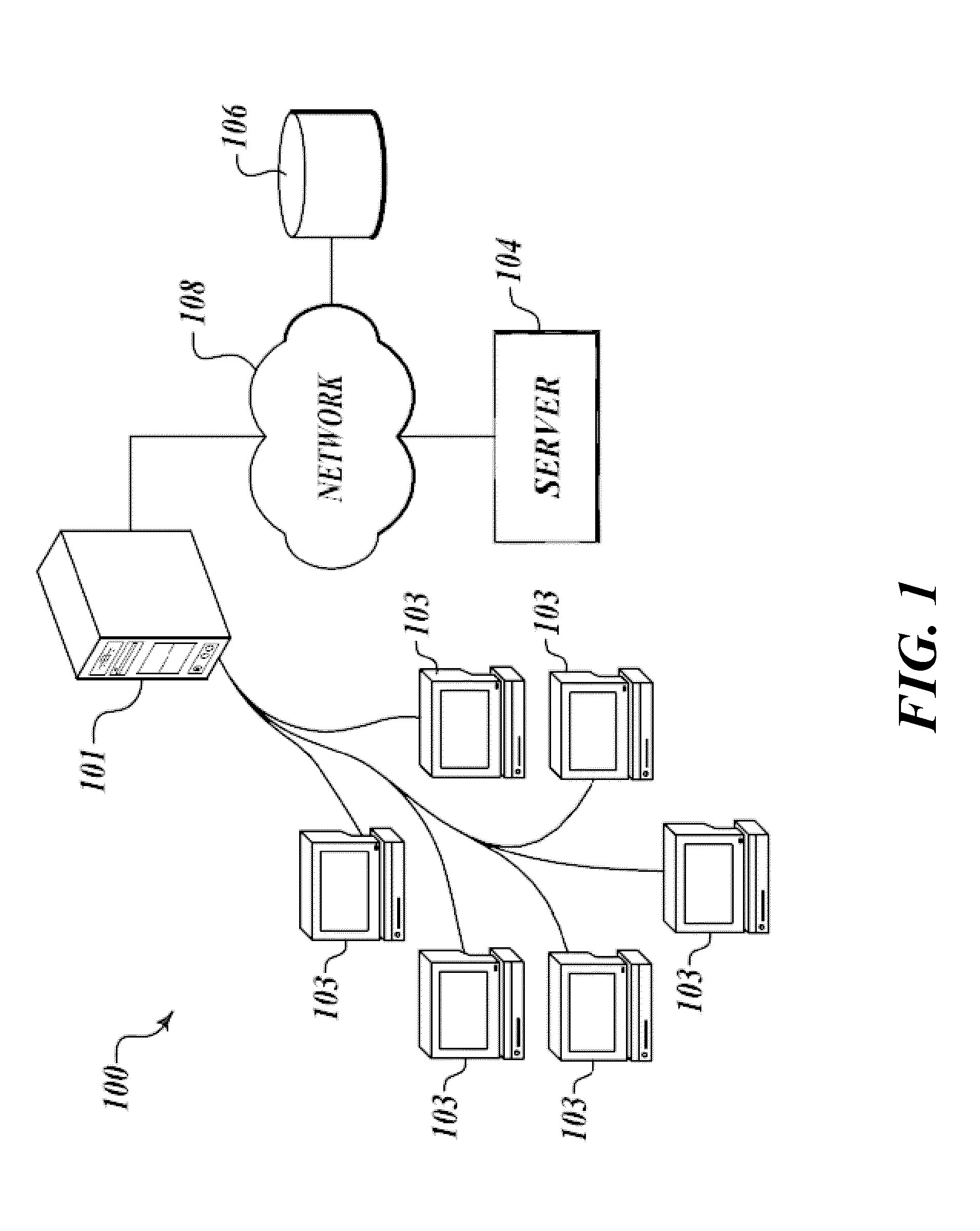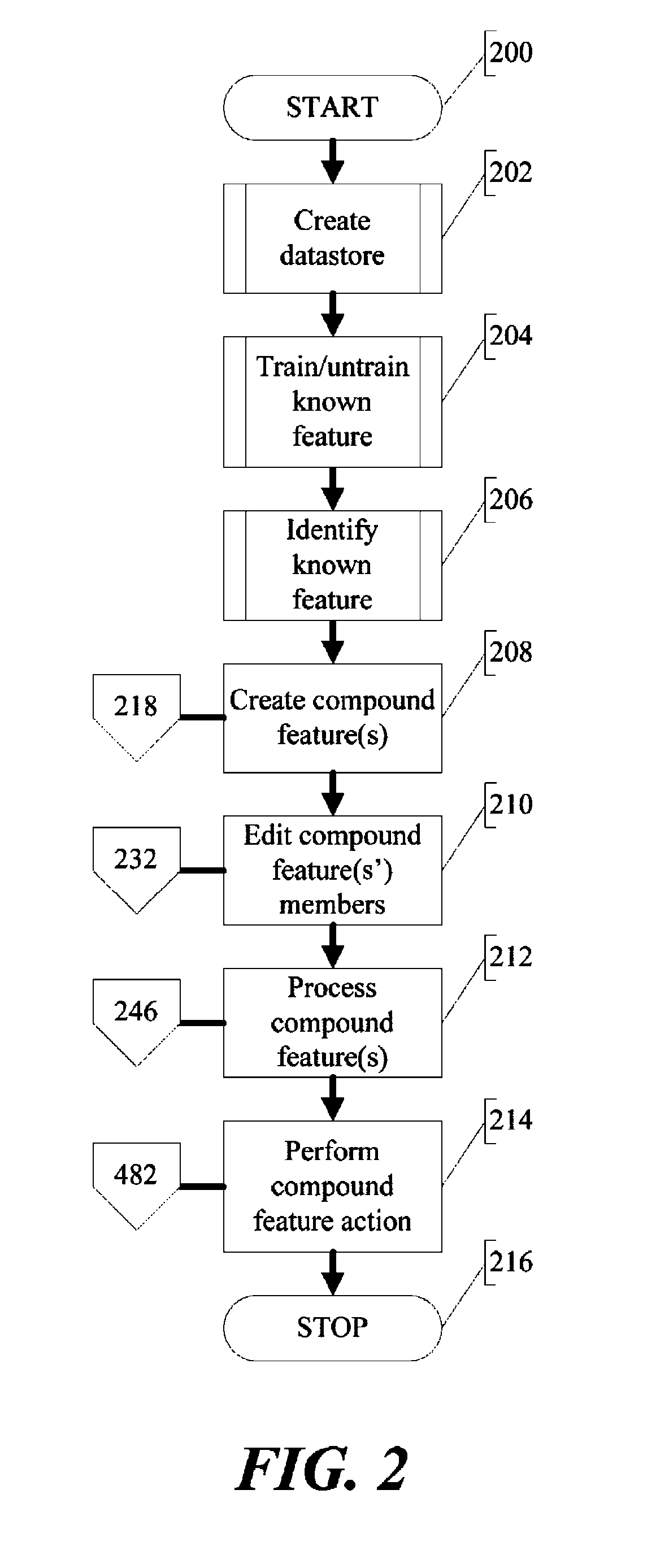Methods and systems for compound feature creation, processing, and identification in conjunction with a data analysis and feature recognition system wherein hit weights are summed
a feature recognition and data analysis technology, applied in the field of data analysis and feature recognition, can solve the problems of data and feature misidentification, information loss, and burden on users to make oft times indiscreet distinctions, and achieve the effect of facilitating human visualization, perception and/or interpretation
- Summary
- Abstract
- Description
- Claims
- Application Information
AI Technical Summary
Benefits of technology
Problems solved by technology
Method used
Image
Examples
Embodiment Construction
[0036]The methods and systems for compound known feature (hereafter “compound feature”) conception, processing, identification, and use, such as disclosed herein, improve upon a common data analysis and feature recognition system, such as described by Brinson, et al., in U.S. patent application 2007 / 0244844 or any acceptable user-specified, preset, or automatically determined application or engine intended for use in the same or a similar manner, by providing a means by which to achieve more complete data elucidation than is currently permitted using known features alone. By using compound features during data analysis and feature recognition exercises, the data values and patterns characteristic of a given data set or selection therein are more effectively evaluated in association with human visual perception and feature discernment. For example, the known feature processing foundation layers, which in some embodiments are based upon training and / or recognition of known features, a...
PUM
 Login to View More
Login to View More Abstract
Description
Claims
Application Information
 Login to View More
Login to View More - R&D
- Intellectual Property
- Life Sciences
- Materials
- Tech Scout
- Unparalleled Data Quality
- Higher Quality Content
- 60% Fewer Hallucinations
Browse by: Latest US Patents, China's latest patents, Technical Efficacy Thesaurus, Application Domain, Technology Topic, Popular Technical Reports.
© 2025 PatSnap. All rights reserved.Legal|Privacy policy|Modern Slavery Act Transparency Statement|Sitemap|About US| Contact US: help@patsnap.com



